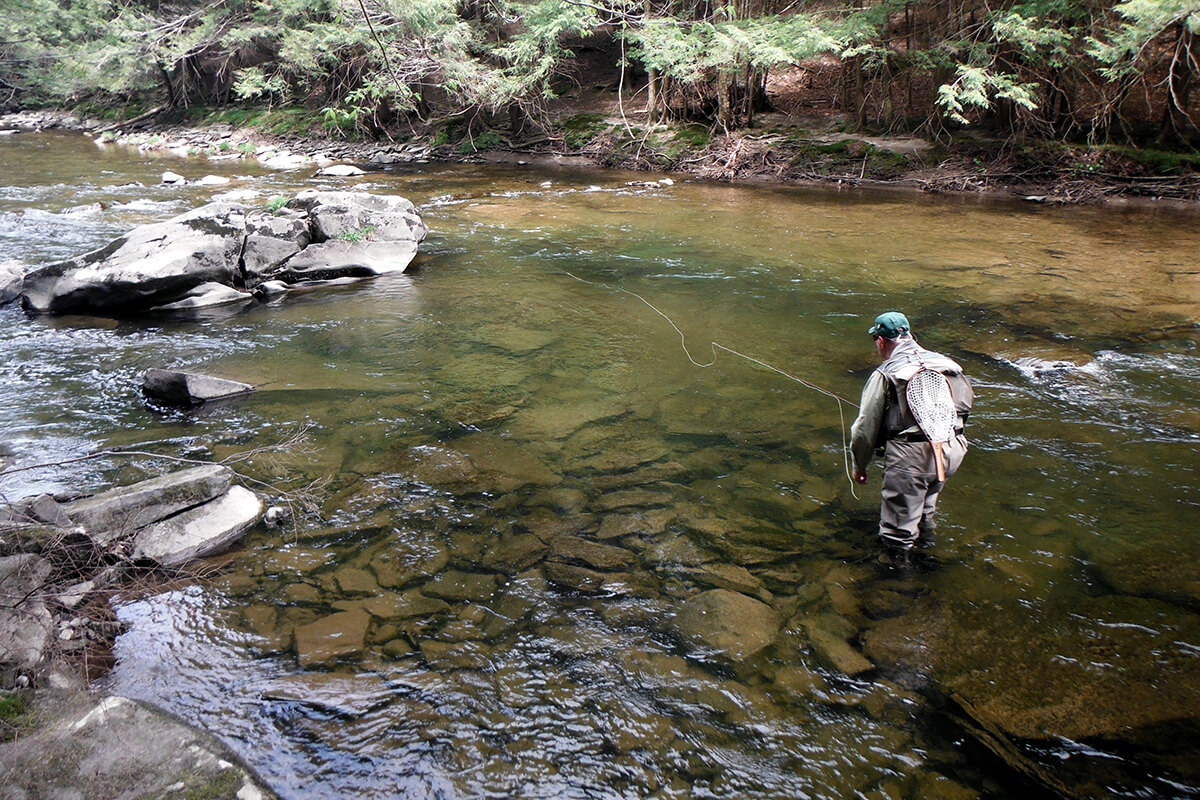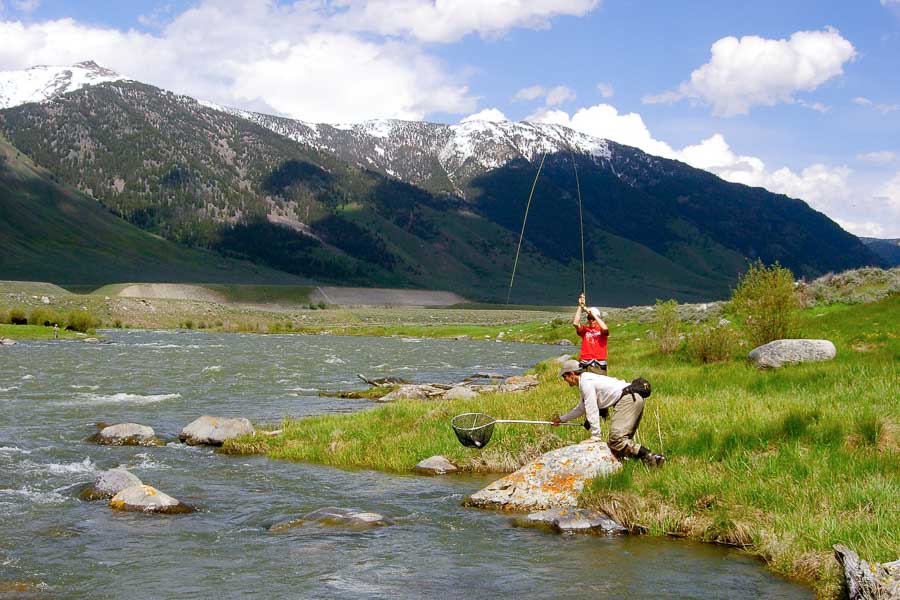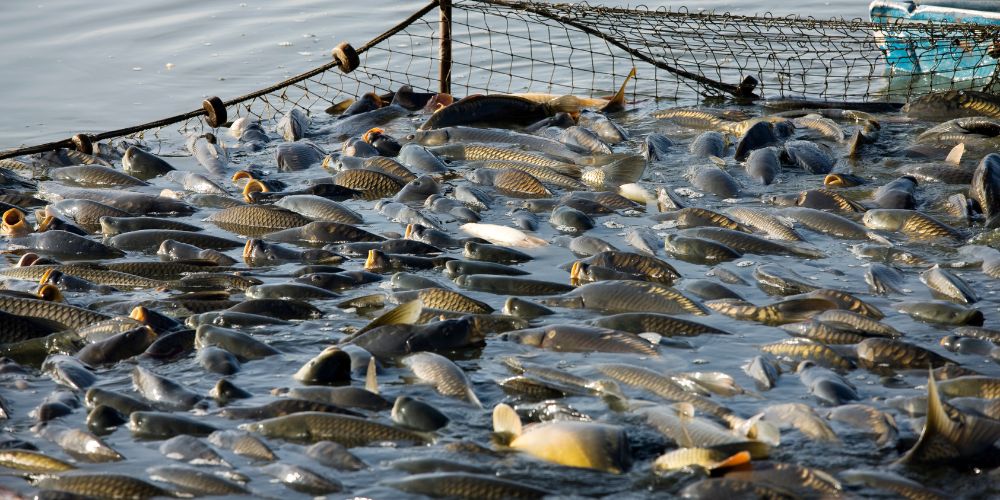Fly Fishing Rivers in the United States: Top Destinations, Tips, and Conservation Advice
There’s something magical about standing knee-deep in a cool river with a fly rod in hand and the sound of water rushing around me. Fly fishing isn’t just a sport—it’s a way to connect with nature and discover some of the most beautiful places in the United States. From the wild rivers of Montana to the lush streams of the Smoky Mountains every region offers its own unique experience.
I love exploring new waters and chasing trout in rivers that have become legends among anglers. Whether I’m after big rainbow trout or just soaking in the peaceful scenery I know there’s always a river waiting to be explored. If you’re looking for your next fly fishing adventure you’ll find plenty of inspiration in the incredible rivers across the country.
What Makes a Great Fly Fishing River

What-Makes-a-Great-Fly-Fishing-River
Fish populations create the core of a great fly fishing river. Consistent presence of wild or stocked trout—examples like rainbow, brown, or cutthroat—improves the likelihood of productive fishing. River accessibility increases the river’s appeal, as diverse entry points or public land segments—such as those found in the Madison or Delaware Rivers—allow anglers to explore and adjust strategies.
Water quality sustains vibrant aquatic life in prime fly fishing rivers. Cold, clear water with healthy insect populations—aquatic insects like mayflies, caddisflies, and stoneflies—supports trout survival and growth. Stream structure shapes ideal habitat, so rivers with riffles, deep pools, and undercut banks—seen in the Henry’s Fork and the Bighorn—attract both fish and anglers.
Surrounding scenery enhances the experience of fishing top US fly fishing rivers. Mountain backdrops or forested banks—seen in the Snake or the Au Sable—combine adventure and beauty. Local regulations maintain the health of great fly fishing destinations, limiting pressure and overfishing in legendary waters such as the South Platte or the Metolius.
Top Fly Fishing Rivers in the United States
Fly fishing rivers in the United States offer rich trout populations and scenic beauty that attract anglers and nature enthusiasts. These premier waterways support thriving wild fisheries, reliable insect hatches, and accessible entry points, creating unforgettable experiences.
Madison River, Montana

Madison-River-Montana
Madison River in Montana stands as a Blue Ribbon trout stream and is one of the nation’s most productive fly fishing locations. I find its headwaters inside Yellowstone National Park deliver consistent action for brown and rainbow trout, especially during insect hatches in late spring and mid-summer. The river’s long riffle sections and deep pools favor dry fly fishing and nymphing. Experienced guides and well-managed access points facilitate productive outings, even for those exploring Madison for the first time.
Snake River, Wyoming
Snake River in Wyoming features strong, healthy trout populations in a broad valley landscape. Cutthroat trout flourish along its twisting channels, with summer and early fall yielding the most reliable surface action during terrestrial and caddis hatches. Public access spans much of the river through national parklands and state-managed areas. Anglers casting to rising trout get clear runs and lesser crowds, making Snake River a desirable, uncrowded alternative to busier destinations.
Delaware River, New York and Pennsylvania
Delaware River runs through New York and Pennsylvania, supporting robust wild trout fisheries across multiple branches and tributaries. I see that both West Branch and East Branch hold cold, oxygen-rich flows ideal for brown and rainbow trout. The Upper Delaware attracts anglers for its prolific mayfly and caddisfly hatches. Float trips and wading opportunities abound due to extensive public access, while steady flow management programs foster stable trout populations and year-round fly fishing potential.
Yellowstone River, Montana
Yellowstone River in Montana spans more than 200 miles and is widely considered North America’s top trout stream. Summer hatches, especially hopper activity from July through September, create prime conditions for catching large brown and rainbow trout. The river carves through Paradise Valley, offering a blend of world-class fishing and memorable scenery. Shallow gravel bars and long riffles make dry fly and streamer techniques effective throughout the season.
White River, Arkansas
White River in Arkansas provides excellent trout fishing opportunities, drawing anglers with its prolific brown, rainbow, and cutthroat trout stocks. Tailwater sections below the Bull Shoals Dam keep water temperatures cold and stable, which supports year-round fishing. Numerous lodges and boat ramps dot the river, giving anglers easy access to public stretches. Frequent stockings and trophy trout potential make White River a notable Southern fly fishing destination.
Essential Tips for Fishing the Best Rivers
Mastering rivers like the Madison, Yellowstone, and Delaware depends on keeping tactics precise and adapting to each location’s changing conditions. These recommendations let me consistently target trout in prime waters across the United States.
Recommended Gear and Flies
Choosing the right gear, matched to river conditions and trout species, determines success on top rivers. I start with a fly rod between 4 and 7 weight, selecting heavier options for rivers like the Missouri where brown trout often run larger. My setup always includes a smooth-drag reel and a high-quality floating fly line for accurate casting. Wading gear keeps me steady in strong currents on big water like the Yellowstone, while polarized sunglasses give me a clear view of deep runs and holding lies.
Selecting flies gets easier by focusing on local insect hatches. I pack dry flies such as Parachute Adams and Elk Hair Caddis when fishing late spring caddis or stonefly hatches on the Madison and Bitterroot. Nymphs, especially Prince Nymphs and Pheasant Tails, work best when trout feed subsurface. For aggressive brown trout, larger streamers in olive or black match forage fish patterns. During late summer on the Yellowstone, foam hopper patterns trigger takes from trout keyed in on terrestrial insects.
Best Times to Fish
Fishing seasons vary widely on US rivers, and the timing of my trips always reflects local conditions and hatches. I find that early spring, March through May, brings excellent fishing in Montana’s tailwaters like the Madison and Missouri due to stable flows and reliable insect activity even during snowmelt. By early July, snowmelt recedes on freestone options like the Yellowstone, opening up prime summer action. August and September stand out for hopper fishing, especially during grasshopper falls that spur aggressive trout strikes.
In northern streams and rivers in Michigan and the Northeast, I concentrate efforts on periods of active insect hatches, such as June’s sulfur and caddis emergences. For smaller waters or high-elevation stretches, I check local hatch charts and adjust timing to intersect peak feeding windows, increasing my odds with every outing.
Conservation and Responsible Angling

Conservation-and-Responsible-Angling
Conservation and responsible angling shape the long-term health of fly fishing rivers in the United States. I focus on preserving habitats, supporting native fish populations, and promoting sustainable fishing practices in every region I visit.
Effective river conservation efforts drive healthy fish populations and resilient ecosystems. For example, Michigan’s Au Sable River remains a cornerstone of North American fly fishing culture, thanks to intensive work maintaining trout habitats and protecting water quality. Ongoing initiatives keep mayfly hatches thriving and ensure sustainable fisheries for future anglers.
Native trout species benefit directly from focused recovery programs. I see results from projects that remove nonnative competitors in western states. Streams in Arizona and New Mexico now support growing Gila Trout populations following federal endangered species protection and habitat restoration coordinated by government agencies and conservation groups.
Public engagement strengthens these efforts. The North American Model of Wildlife Conservation provides the foundation, emphasizing public access, habitat preservation, and funding from license fees and taxes on angling equipment. This approach supports recovery of multiple species and ensures democratic input in river management, with science guiding ongoing protections.
Habitat connectivity stands out as a core principle across top fly fishing rivers. Projects that replace outdated culverts with fish-friendly designs, such as on Wyoming’s Greys River, improve passage for species like the Snake River fine-spotted cutthroat trout. These improvements help fish migrate freely, especially as rising temperatures push trout toward colder upstream habitats.
Responsible angling practices are part of everyday river use. I follow guidelines such as practicing catch-and-release, using barbless hooks, and respecting seasonal closures to reduce stress on fish populations. Local regulations, developed through scientific input, further protect river health by limiting harvest and preserving critical habitats.
Each conservation action I support—whether restoring riparian zones, enhancing habitat connectivity, or promoting responsible angling—ensures fly fishing rivers in the US remain vital and accessible for generations. These strategies link enjoyment of the sport to protection of the ecosystems that sustain it.
Conclusion
Fly fishing in the United States is more than just a pastime for me—it’s a lifelong journey through some of the most breathtaking rivers in the country. Each river I visit offers new challenges and unforgettable moments that keep me coming back for more.
Whether you’re drawn to the wild beauty of the Rockies or the peaceful waters of the East, these rivers have something special to offer every angler. By respecting the waters and embracing sustainable practices, we can all help preserve these incredible fisheries for years to come.
Frequently Asked Questions
What makes a great fly fishing river?
A great fly fishing river has healthy trout populations, accessible entry points, and clean, cold water with abundant insects. Good stream structure and beautiful scenery also enhance the fishing experience.
Which are the top fly fishing rivers in the United States?
Some of the top fly fishing rivers in the US include the Madison River (Montana), Snake River (Wyoming), Delaware River (Northeast US), Yellowstone River (Montana/Wyoming), and White River (Arkansas). Each offers unique scenery and excellent trout fishing.
What kind of gear is recommended for fly fishing these rivers?
A 4-7 weight fly rod, a smooth-drag reel, high-quality floating fly line, waders, and polarized sunglasses are recommended. Local insect hatches determine the best fly patterns to use.
When is the best time to go fly fishing in the US?
The best times are typically early spring and late summer, though this can vary based on the river and local insect hatches. Always check local conditions before planning your trip.
Why is conservation important in fly fishing?
Conservation protects fish habitats, maintains water quality, and ensures fish populations remain healthy. Sustainable fishing practices like catch-and-release and following regulations help preserve rivers for future generations.
How do conservation efforts help trout populations?
Conservation efforts restore habitats, improve water quality, and support native fish recovery programs. This helps maintain strong, diverse trout populations and keeps rivers healthy.
Are there regulations I should know before fishing?
Yes, every river or area may have specific regulations regarding catch limits, fishing methods, and seasons. It’s essential to check and follow local rules to fish responsibly and legally.
What are some responsible angling practices?
Responsible practices include catch-and-release fishing, using barbless hooks, respecting wildlife, and minimizing impact on the environment. Always follow local guidelines to help preserve natural resources.
